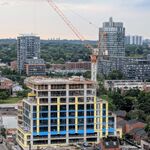BrianPersaud
Active Member
Sales to listing ratio is 81% in downtown condos (balanced market is 20%). Last time it was like that was just before the big bust in '89.
Balanced market is actually betwen 0.4 and 0.6. Check it out for yourself at RBC.
Why now?
-We had record level of immigration in 2000 and 2001, these immigrants are now buying making demand higher (Statcan)
-Home renovation tax credit is causing record spending on home renovations. People are staying put vs moving out (CMHC Renovation and Home Purchase report)
-Low interest rates are spurring more first time home buyers to buy (RBC)
-Recession is causing fewer people to list (people don't want to move up during uncertain times) (CMHC)
Expect listings to up and the ratio subsequently go down next year as the supply of condos get released, people start listing their homes and as the pool of first time buyers able to afford gets lower. Prices will go up 2%-3%
Last edited:




